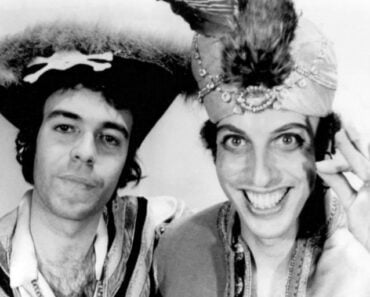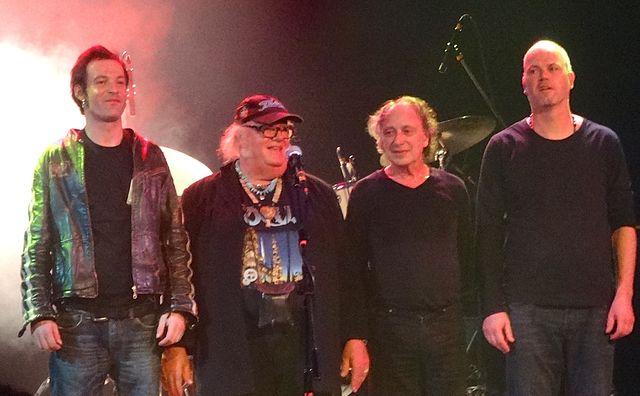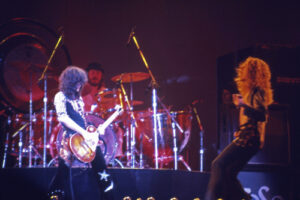
Feature Photo: James R. Martin / Shutterstock.com
The Sound of Young America revolutionized popular music and broke down racial barriers like no other record label in history. Motown Records, founded by Berry Gordy Jr. in Detroit on January 12, 1959, created an unprecedented cultural phenomenon that transformed American music and society. The label’s distinctive “Motown Sound” – characterized by strong backbeats, lush orchestration, call-and-response vocals, and sophisticated arrangements – became the soundtrack of the Civil Rights era while achieving remarkable crossover success with white audiences.
From its humble beginnings at 2648 West Grand Boulevard, dubbed “Hitsville U.S.A.,” Motown operated like a musical assembly line, housing songwriters, producers, musicians, and artist development under one roof. The legendary songwriting team of Holland-Dozier-Holland, producer Smokey Robinson, and the largely uncredited house band The Funk Brothers created the rhythmic foundation for virtually every hit. Between 1961 and 1971, this revolutionary approach yielded 110 Billboard Top 10 hits and established Motown as the most successful independent record company in America.
Motown’s cultural significance extended far beyond commercial success. As one of the most successful Black-owned businesses in American history, it demonstrated African American entrepreneurial excellence during the height of racial segregation. The label’s polished, accessible sound brought Black artists into mainstream white households, helping to break down musical and cultural barriers. Artists like The Supremes rivaled The Beatles in popularity, while socially conscious works like Marvin Gaye’s “What’s Going On” addressed civil rights, war, and social justice.
The label’s influence on popular music cannot be overstated. Its sophisticated production techniques, quality control standards, and integrated artist development created a template that continues to influence modern record labels. From hip-hop producers sampling classic Motown tracks to contemporary R&B artists drawing inspiration from the label’s aesthetic, Motown’s musical DNA flows through virtually every genre of popular music that followed.
10. The Marvelettes
The groundbreaking girl group that launched Motown’s golden era with the label’s first #1 hit. Formed in Inkster, Michigan in 1960, The Marvelettes signed to Motown in 1961 and immediately made history. Their debut single “Please Mr. Postman” became Motown’s first Billboard Hot 100 #1 hit in 1961, establishing the template for the label’s unprecedented success.
The group’s key members – Gladys Horton on lead vocals, Katherine Anderson, Georgeanna Tillman, and later Wanda Young – created a youthful, energetic sound that captured the optimism of early 1960s America. Beyond their historic debut, The Marvelettes scored major hits with “Playboy” (#7), “Don’t Mess with Bill” (#7), and “The Hunter Gets Captured by the Game” (#13). Their success proved that female groups could achieve massive commercial appeal, paving the way for The Supremes and other acts.
The Marvelettes’ cultural impact extends beyond their chart success. “Please Mr. Postman” became such an enduring classic that The Carpenters took it back to #1 in 1975, demonstrating the timeless appeal of Motown’s songwriting. The group’s influence on subsequent girl groups, from The Ronettes to contemporary acts, established many of the vocal arrangements and performance styles that define the genre. Their induction into the Vocal Group Hall of Fame in 2004 recognizes their foundational role in Motown’s empire.
9. Martha and the Vandellas
The dynamic trio that created some of Motown’s most electrifying dance anthems and civil rights soundtracks. Led by the powerhouse vocals of Martha Reeves, this Detroit-based group brought an infectious energy and social consciousness to Motown’s catalog. Formed in 1957 and signed to Motown in 1962, Martha and the Vandellas created a sound that was both celebratory and politically charged, with Reeves’ commanding voice backed by the tight harmonies of Annette Beard and Rosalind Ashford.
Their signature hit “Dancing in the Street” (#2 Hot 100, 1964) became an anthem for both celebration and revolution. The song’s calls for dancing “in Chicago, down in New Orleans, in New York City” doubled as a rallying cry for civil rights gatherings and urban uprisings. Other major hits included “(Love Is Like a) Heat Wave” (#4 Hot 100, #1 R&B), “Nowhere to Run” (#8 Hot 100), and “Jimmy Mack” (#10 Hot 100, #1 R&B). With 12 Top 40 singles and 24 Hot 100 hits, the group proved that Motown’s female acts could match the intensity of their male counterparts.
Martha and the Vandellas’ cultural significance transcends their commercial success. Their music provided the soundtrack for the Civil Rights movement, with “Dancing in the Street” included in the National Recording Registry in 2006 for its cultural and historical importance. The group’s induction into the Rock and Roll Hall of Fame in 1995 recognized their role in creating the high-energy, socially conscious sound that defined Motown’s golden era. Their influence on contemporary artists, from Tina Turner to Beyoncé, demonstrates the lasting power of their dynamic performance style.
8. The Four Tops
The vocal group that achieved remarkable success through unprecedented stability and Levi Stubbs’ distinctive baritone lead. Formed in Detroit in 1953 as The Four Aims, the group signed to Motown in 1963 and achieved something virtually unheard of in the music industry: they maintained the same lineup for 44 years until Lawrence Payton’s death in 1997. This stability, combined with Levi Stubbs’ powerful baritone lead vocals, created a distinctive sound that set them apart from other Motown acts.
The Four Tops dominated the charts with sophisticated, emotionally charged hits. Their breakthrough came with “I Can’t Help Myself (Sugar Pie Honey Bunch)” (#1 Hot 100, #1 R&B) in 1965, followed by their signature song “Reach Out I’ll Be There” (#1 Hot 100, #1 R&B) in 1966. Other major hits included “Baby I Need Your Loving” (#11), “It’s the Same Old Song” (#5), and “Bernadette” (#4). With 24 Top 40 singles and 7 Top 10 hits, they achieved consistent success that spanned multiple decades.
The Four Tops’ musical innovation and lasting influence earned them widespread recognition. Their use of a baritone lead singer was revolutionary when most groups featured tenors, creating a deeper, more sophisticated sound that influenced countless vocal groups. “Reach Out I’ll Be There” showcased complex arrangements and production techniques that pushed Motown’s sound into new territories. Their Grammy Lifetime Achievement Award in 2009 and Rock and Roll Hall of Fame induction in 1990 recognize their contributions to American popular music. The group’s influence extends to contemporary artists who continue to draw inspiration from their sophisticated harmonies and emotional depth.
7. The Jackson 5
The phenomenal child stars who created an unprecedented chart streak and launched the career of the greatest entertainer in music history. Discovered in Gary, Indiana and signed to Motown in 1968, The Jackson 5 – featuring young Michael Jackson’s extraordinary lead vocals alongside his brothers Jackie, Tito, Jermaine, and Marlon – became the first act in popular music history to have their first four charted singles reach #1 on the Billboard Hot 100.
Their chart domination was both immediate and historic. “I Want You Back” (#1, 1969), “ABC” (#1, 1970), “The Love You Save” (#1, 1970), and “I’ll Be There” (#1, 1970) created a winning streak that captivated audiences worldwide. The group’s youthful energy, combined with sophisticated Motown production and Michael’s precocious vocal talent, created a sound that appealed to both children and adults. Their success proved that age was no barrier to musical excellence and established new standards for child performers.
The Jackson 5’s cultural impact extends far beyond their impressive chart statistics. They represented a new generation of Black entertainers who could cross racial and cultural boundaries, appearing on mainstream television shows and becoming international superstars. Their influence on later boy bands, from New Edition to NSYNC, established many of the performance and marketing strategies still used today. Most significantly, the group served as the launching pad for Michael Jackson’s legendary solo career, making their contribution to music history immeasurable. Their Rock and Roll Hall of Fame induction in 1997 recognizes their foundational role in contemporary popular music.
6. The Miracles
The pioneering group that became Motown’s first successful act and launched the legendary career of Smokey Robinson. Formed in Detroit in 1955, The Miracles were discovered by Berry Gordy Jr. and became the foundation upon which the entire Motown empire was built. Led by Smokey Robinson’s smooth tenor vocals and brilliant songwriting, the group created Motown’s first million-selling hit with “Shop Around” (#2 Hot 100, #1 R&B) in 1960.
The Miracles achieved remarkable longevity and consistency throughout the 1960s. Their major hits included “You’ve Really Got a Hold on Me” (#8 Hot 100, #1 R&B), which The Beatles later covered, “The Tracks of My Tears” (#16 Hot 100), “I Second That Emotion” (#4 Hot 100), and “The Tears of a Clown” (#1 Hot 100, #1 R&B). With 26 Top 40 pop hits and 26 Top 10 R&B hits, they demonstrated both commercial appeal and artistic sophistication. Even after Robinson left for a solo career in 1972, the group continued with “Love Machine” (#1 Hot 100) in 1975.
Smokey Robinson’s dual role as performer and songwriter made The Miracles uniquely influential. As Motown’s vice president and primary songwriter, Robinson penned hits not only for The Miracles but also for The Temptations, Mary Wells, and other acts. His sophisticated wordplay and emotional depth in songs like “The Tracks of My Tears” established new standards for popular songwriting. The group’s Rock and Roll Hall of Fame induction in 2012 recognized their foundational role in Motown’s success, while their influence on contemporary artists continues through extensive covers and samples of their work.
5. Diana Ross (Solo Career)
The former Supreme who conquered multiple entertainment mediums and became one of the most successful solo artists in music history. After leaving The Supremes in 1970, Diana Ross launched a solo career that demonstrated remarkable versatility and longevity. Her transition from group member to solo superstar proved that Motown’s artist development system could create entertainers capable of sustained individual success across multiple decades.
Ross achieved extraordinary commercial success as a solo artist. Her debut solo hit “Ain’t No Mountain High Enough” reached #1 in 1970, followed by “Touch Me in the Morning” (#1, 1973), “Theme from Mahogany” (#1, 1975), and “Love Hangover” (#1, 1976). Her 1980 album “Diana” produced the massive hits “Upside Down” (#1 for four weeks) and “I’m Coming Out” (#5), proving her ability to adapt to changing musical trends. Her duet with Lionel Richie, “Endless Love,” spent nine weeks at #1 in 1981, demonstrating her crossover appeal.
Ross’s cultural impact extends far beyond music into film, fashion, and social activism. Her Oscar-nominated performance as Billie Holiday in “Lady Sings the Blues” (1972) proved that Motown artists could excel in dramatic roles. She became a fashion icon whose style influenced generations of performers, while her openly gay fanbase made her an early supporter of LGBTQ+ rights. Her achievement as the only female artist to have #1 singles as a solo artist, duo member, trio member, and ensemble member remains unmatched. Her 12 Grammy nominations and eventual Lifetime Achievement Award recognize her contributions to American popular culture.
4. Marvin Gaye
The artistic visionary who transformed from a smooth crooner into soul music’s most socially conscious voice. Born in Washington, D.C. in 1939, Marvin Gaye joined Motown in 1961 and evolved from a traditional R&B performer into an artist who challenged the label’s hit-making formula. His artistic journey from dance floor favorites to socially conscious masterpieces represents one of the most remarkable transformations in popular music history.
Gaye’s commercial success spanned multiple eras and styles. His early hits included “Stubborn Kind of Fellow” (#46 Hot 100), “Pride and Joy” (#10 Hot 100), and “How Sweet It Is (To Be Loved by You)” (#6 Hot 100). His duets with partners like Tammi Terrell produced classics like “Ain’t No Mountain High Enough” and “Your Precious Love.” However, his masterpiece “I Heard It Through the Grapevine” spent seven weeks at #1 in 1968-69, becoming one of Motown’s most successful singles ever. Later hits like “Let’s Get It On” (#1, 1973) and “Got to Give It Up” (#1, 1977) proved his ability to evolve with changing musical trends.
Gaye’s artistic breakthrough came with “What’s Going On” (1971), which revolutionized both his career and Motown’s artistic approach. The album addressed Vietnam War, civil rights, and environmental issues with unprecedented sophistication, proving that popular music could tackle serious social themes. Songs like “What’s Going On” (#2 Hot 100), “Mercy Mercy Me (The Ecology)” (#4 Hot 100), and “Inner City Blues” (#9 Hot 100) demonstrated artistic maturity that influenced countless musicians. His willingness to challenge Berry Gordy’s commercial formula helped establish artist autonomy as a principle in popular music. His posthumous recognition and continued influence on artists from D’Angelo to Frank Ocean demonstrates the lasting power of his artistic vision.
3. The Temptations
The vocal group that combined smooth harmonies with innovative choreography and became Motown’s most awarded act. Formed in Detroit in 1961 from two rival groups, The Temptations became the embodiment of Motown’s sophisticated artistry. With Otis Williams as the group’s anchor and rotating lead singers including David Ruffin, Eddie Kendricks, and later Dennis Edwards, they created a sound that was both commercially successful and artistically groundbreaking.
The Temptations achieved remarkable chart success with their distinctive blend of traditional soul and psychedelic innovation. Their signature hit “My Girl” (#1 Hot 100, #1 R&B) in 1965 became one of the most beloved songs in American popular music. Other major hits included “I Can’t Get Next to You” (#1 Hot 100), “Just My Imagination” (#1 Hot 100), and “Papa Was a Rollin’ Stone” (#1 Hot 100), which featured complex arrangements and extended instrumental sections. With 4 Billboard Hot 100 #1 hits and 14 R&B #1 hits, they demonstrated both commercial appeal and artistic sophistication throughout their career.
The Temptations’ cultural and artistic innovations established new standards for vocal groups. They were the first Motown act to win a Grammy Award with “Cloud Nine” in 1969, pioneering the psychedelic soul sound that influenced countless artists. Their choreographed performances, featuring synchronized steps and dramatic staging, became the template for contemporary R&B groups. Their ranking as #1 on Billboard’s “100 Greatest R&B/Hip-Hop Artists of All Time” in 2023 recognizes their lasting influence on popular music. Songs like “My Girl” and “Papa Was a Rollin’ Stone” are included in the Rock and Roll Hall of Fame’s “500 Songs That Shaped Rock and Roll,” while their 4 Grammy Awards and Lifetime Achievement Award in 2013 cement their legacy as one of America’s greatest vocal groups.
2. Stevie Wonder
The musical genius who evolved from child prodigy to artistic visionary and became popular music’s most awarded solo artist. Born Stevland Hardaway Morris in 1950, Stevie Wonder signed to Motown at age 11 and grew into one of the most influential musicians in history. His remarkable journey from “Little Stevie Wonder” to artistic independence represents the ultimate success of Motown’s artist development system and the triumph of creative vision over commercial formula.
Wonder’s commercial achievements are staggering and unprecedented. His breakthrough came with “Fingertips (Part 2)” (#1 Hot 100, #1 R&B) in 1963, making him the youngest artist to top the charts at age 13. His evolution continued with hits like “Uptight (Everything’s Alright)” (#3 Hot 100), “I Was Made to Love Her” (#2 Hot 100), and “For Once in My Life” (#2 Hot 100). His artistic maturity in the 1970s produced masterpieces like “Superstition” (#1 Hot 100), “You Are the Sunshine of My Life” (#1 Hot 100), “Sir Duke” (#1 Hot 100), and “I Wish” (#1 Hot 100). With 10 #1 singles and over 100 million records sold worldwide, his commercial success spans multiple decades and generations.
Wonder’s artistic innovations and social impact transcend commercial success. His 25 Grammy Awards represent the most ever won by a solo artist, including the unprecedented achievement of winning Album of the Year for three consecutive releases: “Innervisions” (1973), “Fulfillingness’ First Finale” (1974), and “Songs in the Key of Life” (1976). His pioneering use of synthesizers revolutionized popular music production, while his compositions addressed social issues from racial equality to spiritual awakening. His campaign for Martin Luther King Jr. Day as a national holiday demonstrated his commitment to social justice. His influence on contemporary artists, from Prince to D’Angelo to Kanye West, continues to shape popular music. His Presidential Medal of Freedom and Kennedy Center Honors recognize his contributions to American culture beyond music.
1. The Supremes
The most successful vocal group in American history whose elegant sophistication and unmatched commercial success made them the ultimate embodiment of Motown’s vision. Formed in Detroit’s housing projects in the late 1950s, The Supremes – Diana Ross, Mary Wilson, and Florence Ballard – became the most successful act in Motown’s history and one of the most influential groups in popular music. Their remarkable journey from local teenage singers to international superstars represents the pinnacle of Berry Gordy’s artist development system.
The Supremes’ commercial dominance remains unparalleled in popular music history. Their breakthrough came with “Where Did Our Love Go” (#1 Hot 100, #1 R&B) in 1964, beginning an unprecedented run of success. They achieved 12 #1 hits on the Billboard Hot 100, including “Baby Love,” “Stop! In the Name of Love,” “You Can’t Hurry Love,” and “You Keep Me Hangin’ On.” This total places them second only to The Beatles among all musical groups. Their string of five consecutive #1 hits from 1964-1965 created a level of chart dominance that has never been equaled by any other vocal group. With estimated worldwide sales exceeding 100 million records, they became one of the best-selling music groups of all time.
The Supremes’ cultural significance extends far beyond their impressive statistics. They were the first all-female group to achieve such massive mainstream success, breaking barriers for women in popular music. Their polished image, sophisticated performances, and elegant style made them ambassadors for African American culture during the Civil Rights era, proving that Black artists could achieve the highest levels of commercial and artistic success. Their influence on contemporary artists, from Destiny’s Child to Beyoncé, demonstrates the lasting power of their artistry and presentation. Their appearances on The Ed Sullivan Show and other mainstream venues helped integrate American popular culture, while their sophisticated sound and visual presentation established templates still followed by vocal groups today. Their Rock and Roll Hall of Fame induction in 1988 and 2023 Grammy Lifetime Achievement Award recognize their fundamental contribution to American popular music and culture.
These ten artists represent the pinnacle of Motown’s golden era, combining extraordinary commercial success with lasting cultural impact. From The Marvelettes’ pioneering breakthrough to The Supremes’ unprecedented dominance, each act contributed essential elements to the “Sound of Young America.” Their collective achievement – breaking down racial barriers, revolutionizing popular music, and creating timeless art – established Motown as more than just a record label but as a cultural institution that continues to influence artists and audiences worldwide.
Check out similar articles on ClassicRockHistory.com Just click on any of the links below……
Read More: Artists’ Interviews Directory At ClassicRockHistory.com
Read More: Classic Rock Bands List And Directory



































